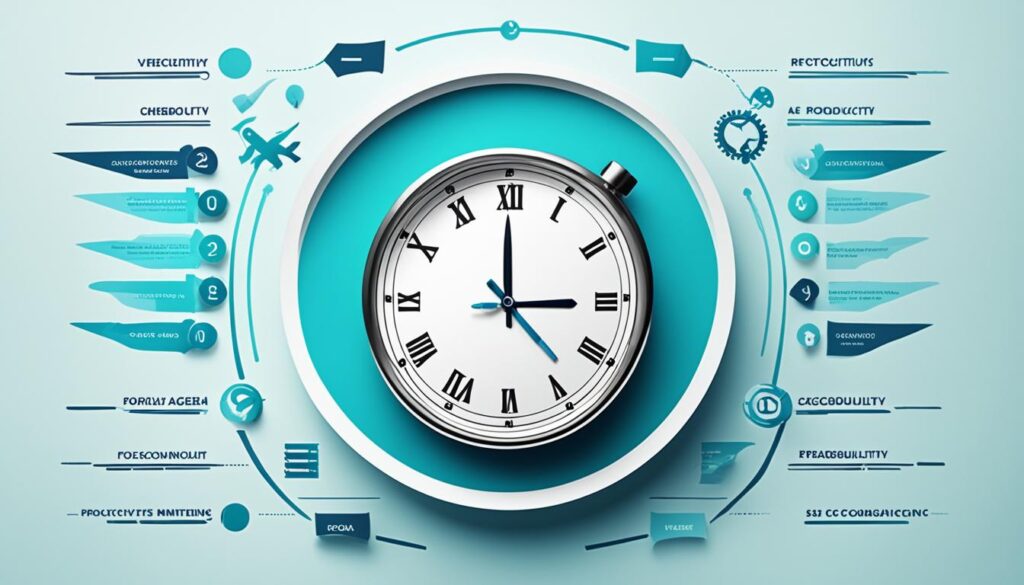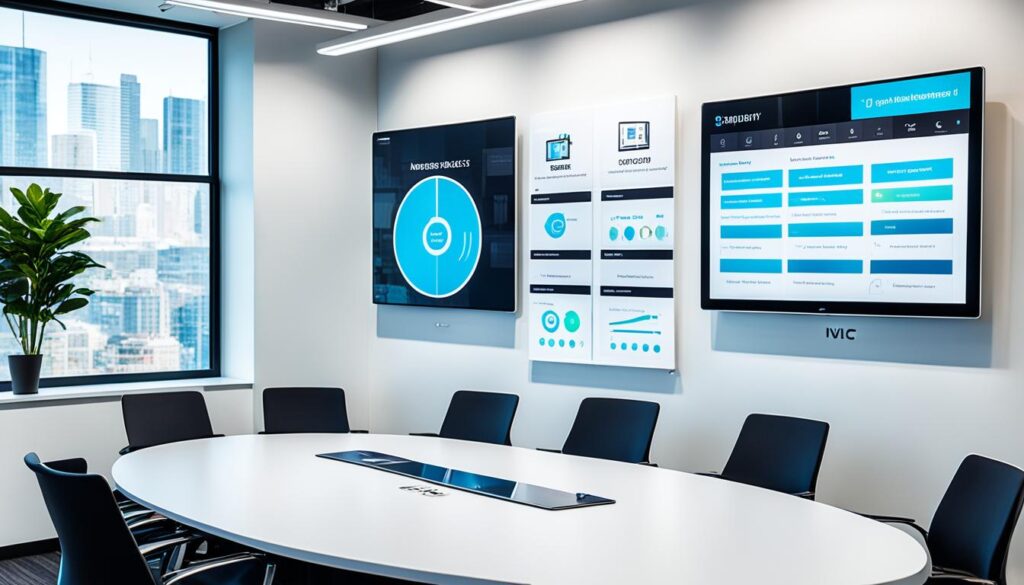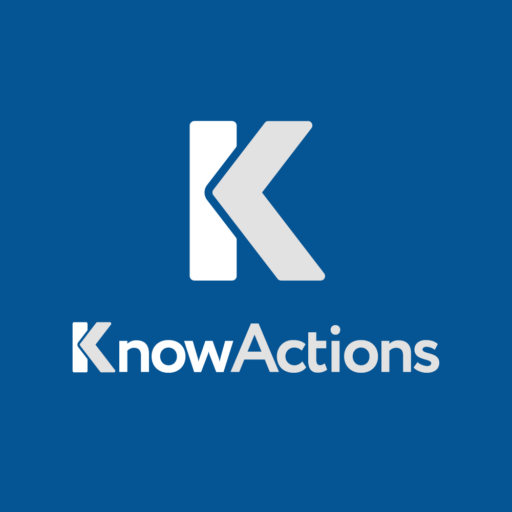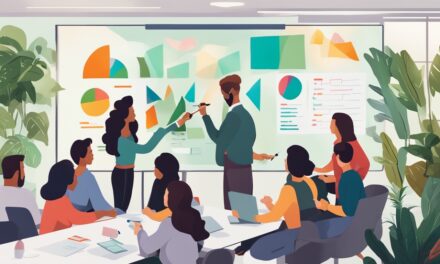Did you know that a staggering 71% of senior managers view meetings as unproductive and inefficient1? This statistic highlights the pressing need for better meeting strategies across industries. In today’s fast-paced business landscape, mastering effective meetings is essential for boosting productivity and fostering accountability.
Effective meeting strategies are vital for organizational productivity and time management, especially in sectors that heavily rely on collaborative decision-making1. By adopting targeted techniques, companies can turn their meetings into powerful tools for driving progress and achieving goals.
In sectors like the software industry, where time is of the essence, productive team meetings are seen as key drivers of success. These meetings improve communication, align goals, and boost overall workplace productivity2. By focusing on meeting efficiency and time management, organizations can unlock their full potential and stay competitive.
To enhance meeting effectiveness, businesses should allocate time strategically. For example, in a sales team meeting, dedicating 15 minutes to review last quarter’s performance and 30 minutes to brainstorm on improving client engagement strategies can lead to more focused discussions3. This method ensures every minute is utilized effectively, aligning with the meeting’s goals.
Accountability is vital for meeting success. Assigning specific roles during meetings promotes responsibility and ensures smoother operations2. Moreover, implementing follow-up procedures and using project management tools for tracking progress can significantly boost accountability and drive results, especially in project-based industries1.
Key Takeaways
- Effective meetings are crucial for organizational productivity
- Strategic time allocation enhances meeting efficiency
- Assigning roles promotes accountability in meetings
- Preparation and clear objectives are essential for success
- Regular evaluation helps improve meeting effectiveness
- Technology can enhance meeting management and efficiency
- Encouraging active participation leads to better outcomes
Understanding the Importance of Effective Meetings
Effective meetings are vital for an organization’s success. They promote productive collaboration and improve communication skills. Let’s delve into the essential elements that make meetings impactful.
The impact of inefficient meetings on productivity
Inefficient meetings can severely impact productivity. A staggering 61 percent of executives found that at least half the time spent on decision-making was ineffective4. This highlights the pressing need for better meeting practices.
Only 37 percent of respondents felt their organizations made timely and high-quality decisions4. This statistic underlines the critical need for enhanced meeting management and decision-making processes.
The role of accountability in meeting success
Accountability is key to successful meetings. Leaders who manage their time well receive robust support in scheduling and resource allocation. 85 percent of effective time managers benefited from such support, whereas only 7 percent of ineffective managers did4.
Meeting facilities, such as space, refreshments, temperature, and lighting, significantly impact meeting effectiveness5. By ensuring these elements are optimal, organizers create an environment that fosters productive discussions and decision-making.
Establishing a culture of meeting efficiency
Building a culture of meeting efficiency demands careful planning and execution. In response to the pandemic, 80 percent of executives considered altering meeting structures and frequencies4. This shift reflects a growing recognition of the need for more efficient meetings.
Meeting leaders should thoughtfully determine meeting lengths based on goals, attendees, and agendas. Cutting the time by 5-10% can help attendees stay focused5. This approach ensures meetings remain productive and engaging throughout.
Setting Clear Expectations for Meeting Outcomes
Effective meetings are vital for fostering collaboration and making decisions within organizations. It’s essential to set clear expectations for what meetings aim to achieve to boost productivity and keep everyone on the same page6. By defining the meeting’s purpose and scope with SMART criteria (Specific, Measurable, Achievable, Relevant, Time-bound), you can greatly enhance its success67.
Having a well-structured meeting agenda is crucial for setting clear goals and keeping discussions focused. This approach ensures attendees are well-prepared, saving time and boosting efficiency86. Communicating the agenda, purpose, and expected outcomes beforehand helps align expectations and improves meeting preparation6.
Assigning specific roles, like facilitator, note-taker, and timekeeper, increases accountability and efficiency7. It’s also vital to ensure only the right people attend, as unnecessary participants can lead to time waste and off-topic discussions8.
During the meeting, reviewing and revising goals keeps discussions focused and addresses any challenges6. Afterward, evaluating the outcomes and following up on action items measures effectiveness, ensures tasks are completed, and promotes team accountability86.
By adopting these strategies and using tools like scheduling software and meeting templates, you can streamline setting meeting goals and expectations86. Remember, setting clear expectations is an ongoing process that improves communication skills and contributes to meeting success.
Creating and Implementing Effective Meeting Agendas
A well-crafted meeting agenda is essential for efficient time management and productive discussions. It guides participants, sets expectations, and keeps everyone focused on the meeting’s objectives9.
Components of a Well-Structured Agenda
An effective meeting agenda includes clear goals, relevant topics, and time allocations for each item. It’s beneficial to list topics as questions to be answered and indicate the purpose of discussions910.

Distributing Agendas in Advance
Sharing the agenda early allows team members to prepare adequately. This practice increases engagement and ensures more productive meetings10. Consider including pre-reading materials to streamline discussions and save time during the meeting.
Allocating Time for Agenda Items
Proper time allocation for each agenda item is key to maintaining focus and respecting participants’ time. Categorize items into informational, discussion topics, and action items to guide the team’s focus effectively10.
| Agenda Component | Purpose | Time Allocation |
|---|---|---|
| Opening and Objectives | Set the meeting’s tone and goals | 5-10 minutes |
| Main Discussion Topics | Address key issues and make decisions | 30-45 minutes |
| Action Items Review | Assign tasks and responsibilities | 10-15 minutes |
| Closing Remarks | Summarize outcomes and next steps | 5 minutes |
By implementing these strategies, you can create meeting agendas that boost efficiency and accountability. This leads to more effective meetings and improved time management.
Meeting Efficiency: Strategies for Optimizing Time Usage
Efficient meetings are vital for productive teams. A Harvard Business Review survey found that 71% of senior managers deemed meetings unproductive and inefficient11. This underscores the importance of effective time management in meetings.
To enhance meeting efficiency, start by inviting only essential participants. This method can shorten meetings by 30% and enhance decision-making12. Establishing clear objectives beforehand boosts engagement and productivity. Interestingly, 63% of employees find meetings lacking without defined goals12.
Adopt timeboxing techniques to maintain focused discussions. Utilize project management tools to monitor progress and foster accountability. These strategies can elevate task completion rates by 43%12. Encourage all attendees, especially quieter members, to contribute their insights.
Optimizing Meeting Schedules
Pay attention to when you schedule your meetings. Mornings are best for uninterrupted work, potentially increasing productivity by up to 37%12. Adding buffer time between meetings enhances engagement by 20% and leads to 15% more efficient discussions12.
| Strategy | Impact |
|---|---|
| Clear objectives | 50% reduction in meeting duration |
| Pre-meeting materials | 35% increase in participant engagement |
| Visual aids | 40% enhancement in information retention |
| Round-robin technique | 45% increase in participation |
By adopting these strategies, you can notably enhance meeting efficiency and time management. Remember, poorly organized meetings cost U.S. companies an estimated $399 billion annually11. Investing in efficient meeting practices is crucial for both time and financial impact, as well as team productivity.
Facilitating Productive Discussions and Decision-Making
Effective meetings rely on productive discussions and efficient decision-making. A well-facilitated meeting can significantly enhance engagement and outcomes. In fact, facilitated meetings exhibit 33% higher engagement levels than those led by a single person13.
Encouraging Active Participation
To encourage active participation, create an environment where all attendees feel comfortable sharing their ideas. Utilize collaborative tools like digital whiteboards, which can increase engagement by 47%13. Implement facilitation questioning techniques to boost comprehensive discussions by 35%13.
Managing Conflicting Opinions
Conflicts are inherent in group settings. Address them constructively by reframing issues, practicing empathy, and seeking compromises. Encourage healthy debate to uncover the best solutions. Remember, meetings with active participation from all attendees show a 40% improvement in problem-solving speed13.
Techniques for Reaching Consensus
Focus on consensus decision-making to ensure all parties support the final agreements14. Utilize techniques like voting or breakout rooms to generate ideas. Set clear objectives and share the agenda beforehand to improve discussion quality and time management15. By adopting these strategies, you can enhance communication skills, foster collaboration, and streamline the decision-making process.
Remember, facilitation is crucial for meeting success. Develop your skills through experience, observation, and training14. With practice, you’ll become adept at guiding discussions, managing conflicts, and achieving productive outcomes in your meetings.
Leveraging Technology for Enhanced Meeting Management
Technology has transformed how we manage meetings, significantly boosting efficiency and fostering collaboration. Modern platforms provide unparalleled visibility and control over team organization16. Tools like video conferencing, screen sharing, and interactive whiteboards have revolutionized meeting effectiveness17.

Project management software simplifies the creation and distribution of meeting agendas. It allows team members to contribute topics, ensuring discussions are relevant17. Sharing agendas 48 hours before the meeting leads to more productive outcomes17. As a result, organizations see a 63% increase in meeting focus with structured agendas18.
Digital tools enhance communication skills and engagement during meetings. Features like polls, quizzes, and surveys encourage active participation17. Breakout rooms facilitate in-depth discussions among small groups. These tools lead to a 35% increase in better decision-making18.
| Technology | Benefit | Impact |
|---|---|---|
| Video Conferencing | Remote Participation | 50% Efficiency Increase |
| Project Management Software | Task Tracking | 30% Team Efficiency Boost |
| Interactive Whiteboards | Visual Collaboration | 40% Improved Discussions |
Cloud-based file sharing centralizes document access for real-time collaboration16. This promotes a culture of meeting efficiency. Analytics platforms turn data into visualizations, aiding in monitoring key metrics16.
Adopting technology in meetings leads to a 20% improvement in time management18. It’s essential to provide training for effective technology use. Regular performance reviews help assess progress and identify areas for improvement16.
By embracing these technological advancements, organizations can significantly enhance meeting efficiency and create a collaborative environment. Effective breaks between tech-enhanced meetings can further boost productivity and creativity.
Accountability Measures: Assigning and Tracking Action Items
Action items are crucial for productive meetings and effective collaboration. They provide clarity, focus, and direction to teams, ensuring everyone knows their roles and deadlines19. Strong accountability measures ensure these action items lead to real outcomes.
Clearly Defining Responsibilities and Deadlines
Effective action items consist of a clear goal, a designated person, and a deadline19. This setup enhances accountability and minimizes social loafing19. Interestingly, 82% of team members leave meetings with clear action items, and 75% remain organized with tasks and due dates20.
Implementing Follow-up Procedures
Follow-up is essential for completing action items. Meeting notes software aids in sharing agendas and assigning tasks for easy tracking21. Regular updates foster a culture of openness and enhance team communication19. This method results in a 68% increase in team accountability20.
Using Project Management Tools for Tracking Progress
Project management tools are crucial for monitoring action items. 89% of teams benefit from meeting management software to streamline tasks and enhance communication20. These tools ensure action items are promptly moved to work management systems, preventing them from being overlooked or delayed21. With effective tracking, teams see an 80% increase in productivity20.
| Benefits of Action Item Tracking | Percentage |
|---|---|
| Increase in productivity with clear action items | 87% |
| Teams benefiting from meeting management software | 89% |
| Increase in productivity with efficient tracking | 80% |
| Improved communication and collaboration | 60% |
By adopting these accountability measures, teams can significantly enhance their meeting productivity and collaboration effectiveness.
Post-Meeting Evaluation and Continuous Improvement
Post-meeting evaluations are vital for enhancing meeting efficiency and team dynamics. They allow participants to express their opinions, promoting engagement and continuity22. These evaluations assess the meeting’s effectiveness, pinpoint areas for improvement, and boost productivity by focusing on agenda clarity, participation, utility, and time management22.
Effective meetings hinge on four essential performance indicators: results, process, participation/tone, and next steps23. When assessing meetings, consider these critical questions:
- Were the results successful and necessary?
- Did the meeting start and end on time?
- Was it well-planned and executed?
- Were follow-up actions properly identified and tracked23?
Regular evaluations establish a feedback loop essential for refining business meeting quality and efficiency22. They ensure transparent documentation, leading to informed decisions and better future outcomes22.
Technology can simplify the evaluation process. AI-powered tools like Jamie automate summaries and track actions, significantly cutting down time commitments and boosting productivity22. These tools monitor decisions and track action items, ensuring transparency and accountability in effective meetings22.
By analyzing performance and learning from lessons, organizations can enhance meeting scheduling, planning, conduct, and documentation23. This continuous improvement approach cultivates a culture of productivity and goal achievement, improving overall communication skills and meeting efficiency.
Conclusion
Meeting Mastery is essential for an organization’s success, as nearly half of meetings are deemed poor24. Effective meeting strategies can turn these sessions into drivers of success. The Level 10 meeting framework, with its structured approach, has led to a notable improvement in meeting effectiveness25.
Accountability is key to meeting success. The Level 10 agenda dedicates time for reviewing past tasks and addressing critical issues, ensuring tasks are completed and progress is tracked25. This method helps avoid Stagnation, the most common meeting outcome, and propels Advancement towards project goals24.
Effective Meetings are marked by clear expectations, structured agendas, and productive discussions. The Level 10 framework focuses on efficient time management, allocating 60 minutes to major issue identification, discussion, and resolution25. This emphasis on problem-solving leads to hard action and tangible results, resulting in more Conclusions and Advancements in project outcomes2425.
By consistently applying Meeting Mastery techniques and emphasizing Accountability, organizations foster a culture of productive collaboration. This approach optimizes time usage and enhances results in professional meetings, transforming them into powerful tools for growth and success.




